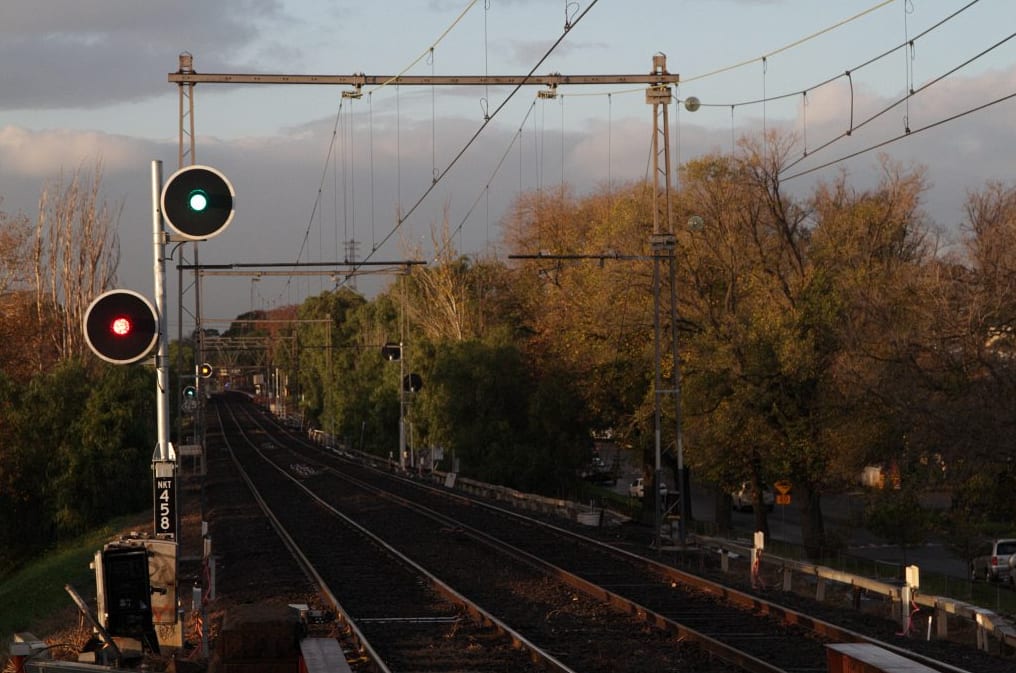Green over red: 'high capacity signalling' to proceed at normal speed in Melbourne
On Thursday the Premier and Minister for Public Transport held a media conference which appears to have now put the humble line-side signal on the endangered species list. At the same time, the announcement for expressions of interest in the new train control system adds a new chapter to the story of Metrol, the primary train control centre for the rail network.
As the Melbourne Metro project is going to merge the Sunbury, Pakenham and Cranbourne rail lines into single metro line, it is also going to get its own dedicated train fleet and will be the first set of lines in Melbourne to get a completely new signalling system.
Technology has come a long way since 1981! Today we released our rail systems EOI #TBT https://t.co/Fo0bCqD4KG pic.twitter.com/2pcg186Fws
— Melbourne Metro Rail (@melbournemetro) May 12, 2016
In a nutshell, Melbourne's existing signalling system breaks portions of track up into blocks: a signal stands at the start of each block and the colours displayed (the signal 'aspect') tells the driver of a train what they can/cannot do.
For instance, a signal which has a green over a red (such as in the lead image) means that the driver of a train can proceed past the signal at normal line speed. A signal displaying red over red means the driver cannot pass the signal. Head over to this concise guide on Vicsig.net to learn more about our currently signalling system deployed around Melbourne.
Although not explicitly mentioned in Victorian Government's media release, this new high-capacity signalling system is likely to be a communications-based train control and moving block system.
In this scenario, trains are fitted with transceivers which communicate with equipment installed along each train track and real-time information - such as train position and speed - is fed into a system which monitors the entire network. Precision is the key difference between what we have and communications-based train control systems.
Moving blocks versus Fixed blocks
The precision which comes with communications-based train control systems allows a safer implementation of moving blocks to separate trains on a line. Where we currently have fixed blocks whose signals govern train movements, in a moving block scenario and because the system which operates the line knows exactly where every train is, fixed blocks can be done away with and instead the train control system maintains the distance between trains.
On the fixed block (upper) line, the train on the right is occupying two blocks; this forces a greater distance between the trains. On the moving block (lower) line, the distance between the leading (right) and trailing (left) trains is shorter because the control system is maintaining the safe minimum distance, not fixed signals.
The following video filtered on to the Premier's Facebook feed on Thursday afternoon.
As the video shows, the ability to run trains closer together means that there is more capacity on a single track; in other words, more trains can be operated. This is generally expressed as 'X number of trains per hour' which can then directly translate into how often a train will arrive and depart at a station, i.e. 30 trains per hour = a train will arrive at/depart a station every 2 minutes.
The claim in the government video is that our current fixed block signalling can only successfully handle 20 trains per hour and that the new system will enable 24-30 trains per hour. This may well be the case, however what is not mentioned…
The railway will become increasingly automated
On our current network, it is left to the skill of the train driver to accelerate, decelerate, stop at the right spot on the platform and obey warnings and guidance from line-side signals. With a communications-based train control system, all those traditional train driver tasks can be handled by a combination of the control system embedded on the rail line and a train's own internal operating system.
And as seen by many railway systems around the world, the job of a train driver can also be made redundant with full automation. I don't suspect we'll be heading for full automation upon the opening of Melbourne Metro but it could be made possible, perhaps inevitable.
Lead image credit: Marcus Wong's rail gallery.
